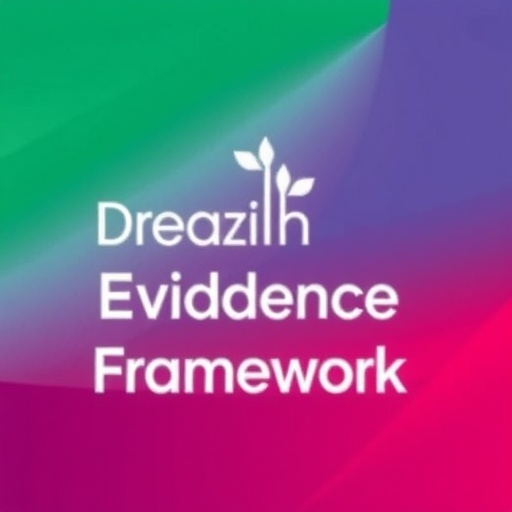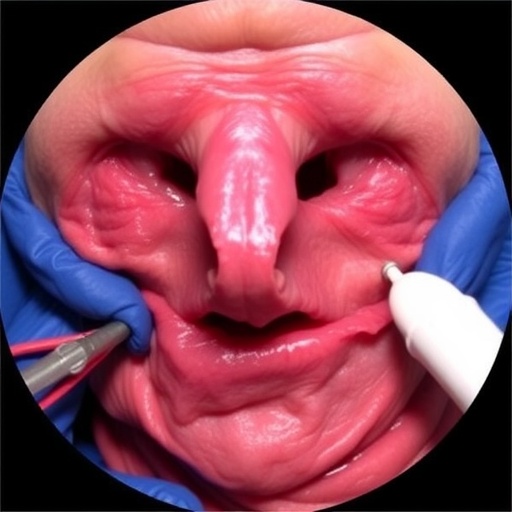NEW YORK — MARCH 28, 2023 – For patients with psychiatric conditions, illness severity and instability are key factors in predicting future risk of hospitalization, according to a new study by Holmusk, a leading behavioral health real-world evidence and data analytics company, that has been published in The Lancet Psychiatry. The study, which was enabled by Holmusk’s NeuroBlu Database, could prove useful across the behavioral health care and research ecosystem, from facilitating early intervention to supporting the development of more targeted treatments.

Credit: Holmusk
NEW YORK — MARCH 28, 2023 – For patients with psychiatric conditions, illness severity and instability are key factors in predicting future risk of hospitalization, according to a new study by Holmusk, a leading behavioral health real-world evidence and data analytics company, that has been published in The Lancet Psychiatry. The study, which was enabled by Holmusk’s NeuroBlu Database, could prove useful across the behavioral health care and research ecosystem, from facilitating early intervention to supporting the development of more targeted treatments.
The research was conducted using Holmusk’s NeuroBlu Database, a real-world data source that contains longitudinal, de-identified data from the electronic health records of more than 1.4 million patients receiving care for behavioral health conditions at over 30 health systems across the U.S. Researchers examined the associations among clinical severity, instability, and psychiatric hospitalization, producing the first study to explore whether early clinical trajectory serves as a predictor of psychiatric hospitalization across diagnoses. In addition to publication in the peer-reviewed The Lancet Psychiatry, findings from the study also have been presented in recent weeks at Academy of Managed Care Pharmacy’s annual meeting, held this year in San Antonio, and at the annual European Congress of Psychiatry, held this year in Paris.
“Our vision in creating the NeuroBlu Database was to provide the gold standard for behavioral health real-world data,” said Nawal Roy, Founder and CEO of Holmusk. “Findings like these validate that this vision is being realized. Even more importantly, they underscore the importance of developing standardized measures across behavioral health care in order to improve patient care and outcomes.”
The research team, led by clinical psychiatrist and University of Oxford senior research fellow Maxime Taquet, found that patients who experienced severe illness and instability within the first two months of their clinical encounters had a significantly higher risk of psychiatric hospitalization within six months. In fact, patients ranking in the top half for clinical severity and instability had a 45% increased risk of hospitalization. Researchers used scores from the Clinical Global Impression Severity scale (CGI-S) to measure both clinical severity and instability.
The study, which included over 36,000 patients, also found that this association remained consistent across a wide range of diagnoses, including major depressive disorder, bipolar disorder, schizophrenia, post-traumatic stress disorder, and other behavioral health conditions. The association was seen in both adults and children, and in both men and women. To further establish the strength of the association, researchers replicated the analysis with a different group of patients, this time using the patient-reported outcome measure Patient Health Questionnaire (PHQ-9). Their findings complemented results from the original analysis.
“Holmusk’s NeuroBlu Database is an invaluable resource whose real-world data made this analysis possible,” Taquet said. “Not only does the NeuroBlu Database include frequently collected psychometric scales, such as the CGI-S used in this study, but it also includes longitudinal data across diverse treatment centers, including emergency rooms and hospitals. The completeness of this EHR-derived data enabled us to examine patients’ clinical journeys and determine whether they had been admitted to the hospital within the first six months after initiating care.”
The research has implications for many areas across the behavioral health ecosystem. In clinical practice, providers could use severity and instability to aid in making decisions, such as which patients might benefit from intensive interventions. Hospitals and health systems could use this information in planning provision of care, such as predicting need for psychiatric hospital beds. Finally, researchers could use these findings to accelerate the development of new interventions that aim to prevent hospitalization or to help recruit specific patient cohorts based on their hospitalization risk.
Additional authors of the paper include Holmusk contributors Kira Griffiths, Emily Palmer, Sheryl Ker, and Christian Liman, as well as former Holmusk contributors Soon Nan Wee, Scott Kollins, and Rashmi Patel. In addition to his role at University of Oxford, Taquet has a consultancy contract to conduct research at Holmusk.
The full study is available here. To learn more about Holmusk’s NeuroBlu Database, visit neuroblu.ai.
About Holmusk
Holmusk is on a mission to harness real-world data to transform both research and care for behavioral health. Combining NeuroBlu, the behavioral health industry’s single source of truth for fit-for-purpose real-world data, with digital solutions designed to address the most pressing challenges in behavioral health, Holmusk is advancing the frontier of evidence generation and fueling innovation. Holmusk is headquartered in Singapore and New York, with three additional offices around the world. For more information, please visit http:/www.holmusk.com.
Media Contact
Kaitlin Jansen
Senior Manager, Marketing & Communications, Holmusk
[email protected]
+1 (704) 995-2384
Journal
The Lancet Psychiatry
DOI
10.1016/S2215-0366(23)00066-4
Method of Research
Observational study
Subject of Research
People
Article Title
Early trajectory of clinical global impression as a transdiagnostic predictor of psychiatric hospitalisation: a retrospective cohort study
Article Publication Date
23-Mar-2023
COI Statement
Kira Griffiths, Emily Palmer, Sheryl Ker, Christian Liman all claim full-time employment with Holmusk.
Scott Kollins, Soon Nan Wee, and Rashmi Patel claim prior employment with Holmusk.
Maxime Taquet’s primary affiliation is with University of Oxford, but he has a consultancy to conduct research with Holmusk and NeuroBlu data.




